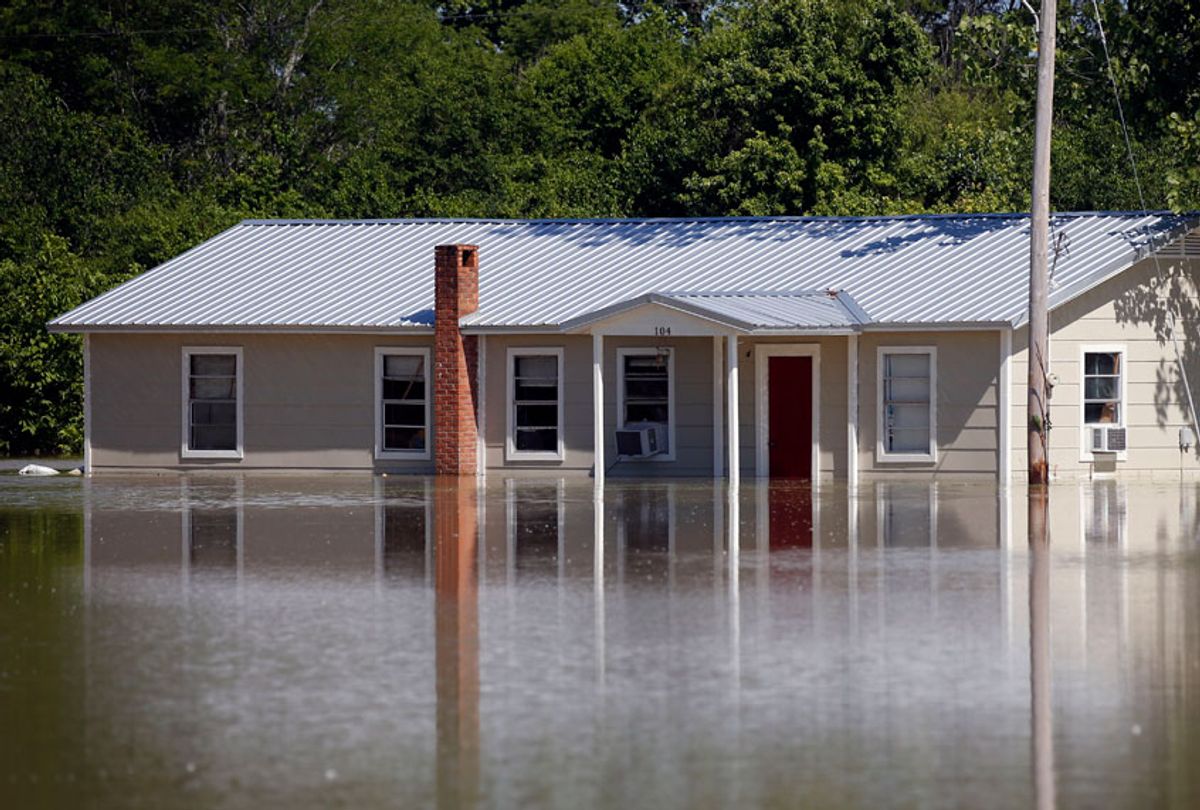The U.S. Army Corps of Engineers could flood 130,000 acres of farmland in southeast Missouri by blowing up levees on a floodway on the Mississippi River if the remnants of Barry or other storms this summer dump too much rain.
The Coast Guard has posted plans to halt, if necessary, barge traffic on the Mississippi from the junction with the Ohio River at Cairo, Ill., to downstream of New Madrid, Mo.
Missouri Gov. Mike Parson said heavy rain from Barry could cross part of southeast Missouri. A flash flood watch is in effect for parts of Missouri, Illinois and Kentucky from Monday to Tuesday. The Ohio River at Cairo was more than a foot below flood stage at 38.6 feet on Tuesday.
“More than 70 years passed between the first and the last time the Army Corps had to detonate the Birds Point levee and activate the New Madrid floodway,” said Bruce Morrison, an attorney for the Great Rivers Environmental Law Center in St. Louis. “Here we are just eight years later and the federal agencies again are confronting the prospect of having to blow the levee to lower flood levels. If we continue to restrict the River from its natural floodplain, the frequency with which the country needs to employ these emergency measures is only going to increase.”
The Corps set aside 130,000 acres between Bird’s Point, Mo., across the river from Cairo, and New Madrid nearly a century ago after the Mississippi River flood of 1927, one of the worst natural disasters in our nation’s history.
The floodway is one of four on the Mississippi River. It is supposed to protect Cairo and 2.5 million acres of land in Missouri, Arkansas, Kentucky and Tennessee.
Barry weakened to a tropical depression and was crawling north up Louisiana at 9 mph Sunday afternoon, slower than a bicyclist. Weather forecasters were saying that parts of the Lower Mississippi Valley could see up to 15 inches of rain.
The Corps first used the Birds Point-New Madrid floodway in 1937.The last time the Corps used explosives to blow up the levees for floodway was on May 2, 2011, after repeated delays by Michael Walsh, then the Corps official in charge. Chris Koster, then the Missouri attorney general, sued the Corps to try to block it from using the floodway.
Millions of dollars in flood damages could have been prevented if the Corps had opened the floodway sooner. One of the people on the Mississippi River Commission, which makes recommendations on flood control, was R.D. James, a New Madrid farmer who owned land in the floodway and had been on the commission since 1981 when he was appointed by former President Ronald Reagan.
Trump appointed James to lead the Corps’ civil works division which oversees levees. James said in his federal ethics paperwork that he recused himself from decisions that affect his farm.
The Corps opened another floodway, the Bonnet Carre spillway, about 12 miles west of New Orleans, to try to protect New Orleans from flooding.




Shares